White sand’s, turquoise sea’s, blue skies. Was this really Scotland?

Having experienced the joy’s (and woe’s ) of a long distance hike with a good friend of mine, I decided that I wanted my family to reap the benefit’s for themselves. That slowing right down, getting away from it all, the simple act of just putting one foot in front of the other in order to get from A to B.
With the benefit of hind sight, we should have picked something on the mainland and something a bit shorter! However, I was flicking through a magazine one day and in it was an article about the Hebridean Way. It leapt out of the page and hit me in the chop’s. I thought to myself, wow, this place looks incredible, in for a penny in for a pound and all that, if we’re going to do this at all let’s make it worth while. The rest of the family just had to humour me.
I have to say at this point that we didn’t actually manage to hike the whole 155 miles. It was too damn hot! Who would have thought? Still, I am so glad that we went because this series of islands as far west as you can go within the United Kingdom, next stop North America, was a truly incredible place.
This isn’t an article about the Hebridean Way itself, nor is it about beautiful hotels or fabulous food as we experienced neither of these, having slept under canvas and nourished ourselves with sachets of bowel blocking rations that tasted the same regardless as to wether it was an all day breakfast, meatballs and pasta or chocolate pudding!
What I’m hoping it is is an insight to this wild, wind swept archipelago, it’s folk, it’s flora and fauna and a little bit of history.
We camped the night before at a little camp site in Oban, over looking the tiny island of Kerrera. We felt a bit nervous, knowing that what we hoped to achieve was no small undertaking, especially with two dogs in tow and having to carry all their food as well as water, tents, our food etc. etc. We had trained hard though and were prepared to give it our all.

The next day, we enjoyed a delicious seafood lunch, what was to be our only vaguely foody experience of the trip, from a little seafood shack on the harbour. Crab sandwiches and hot smoked salmon rolls, shielding them from opportunistic, scavenging seagulls and dogs!
We had booked the 1330 ferry crossing from Oban to arrive in Castlebay on Barra at 1815, so a 4 hour and 15 minute journey crossing the Minch.

It wasn’t long before Oban was a speck in the distance.



We were so lucky to be accompanied by a pod of dolphins, just thrilling to watch them speeding along, you really got the sense that they were having the time of their lives. A man with a camera complete with lense the size of Jodrell Bank had seen orca just a moment before. I have never seen them in the wild and I was gutted that I’d been so close yet so far away.
We pitched our tents in the machair over looking the sea and right beside the start post of the trail. By ten thirty pm it was still broad daylight. From my sleeping bag I could hear the tide gently kissing the shore and the sound of oyster catchers as they chatted to each other. Peeping outside, just to make sure I was really here, the sky was milky pale then pale coral with the palest of shell pink gently touching the sea and the tops of the surrounding hills.
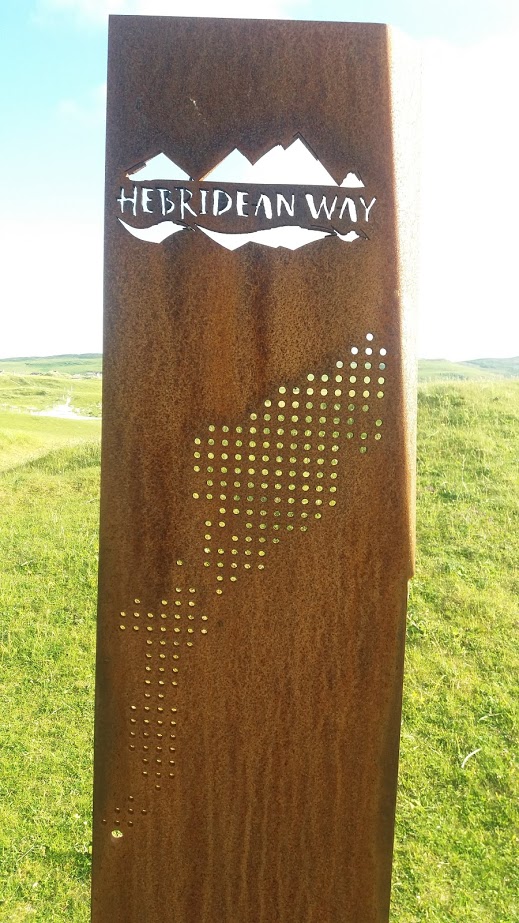
What is Machair? I hear you ask.
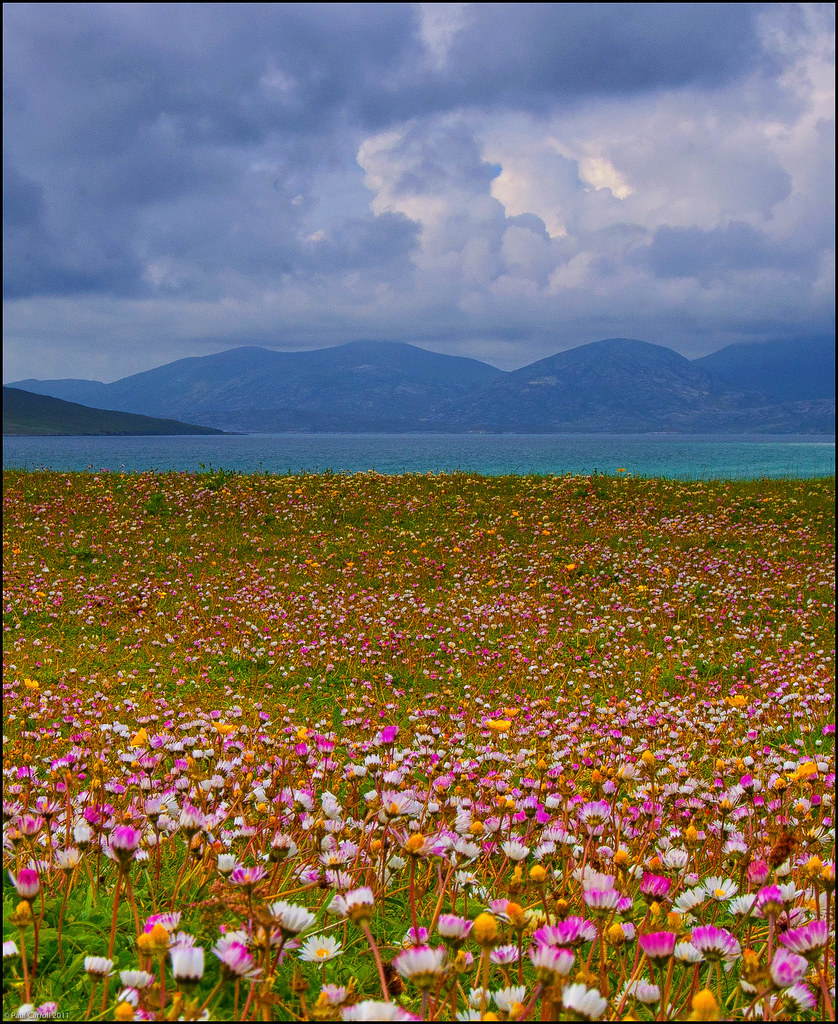
Machair is a Gaelic word meaning ‘low lying grassy plain’. The best examples are to be found on north and south Uist, Harris and Lewis. It’s formed through a cocktail of elements; the low lying coast line, sand and shell fragment’s being deposited by the wind, the effect’s of strong wind’s, just the right amount of rainfall and the involvement of people and their grazing animals.
The variety of flora that this unique phenomena supports is incredible and the species that this in turn attracts is of real conservation value.
There is even a way marked route linking the best spots to drink in this magical array of wild flowers, best seen in May, June and July.

photo credit to VisitScotland/Paul Tomkins
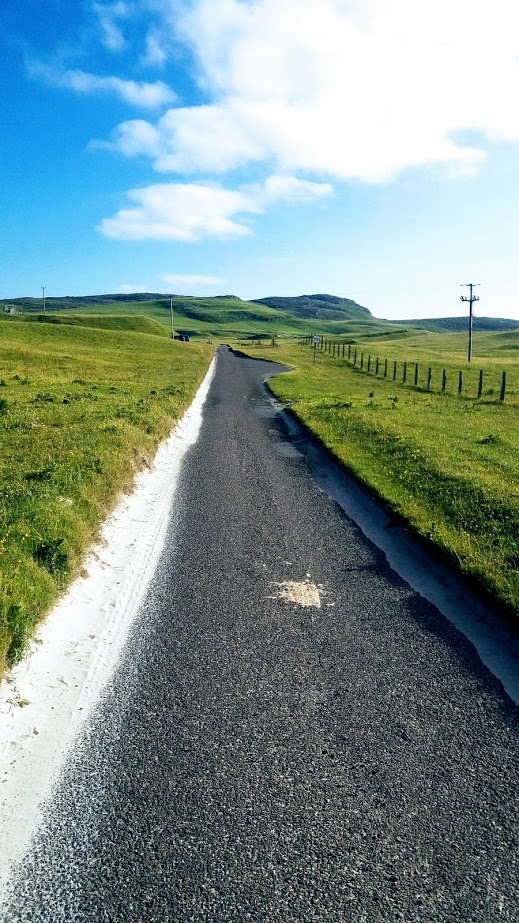



We witnessed so many wonderful wild flowers en route including early marsh orchids and white water lillies, shown above and yellow iris and fields of fluffy white cotton grass.
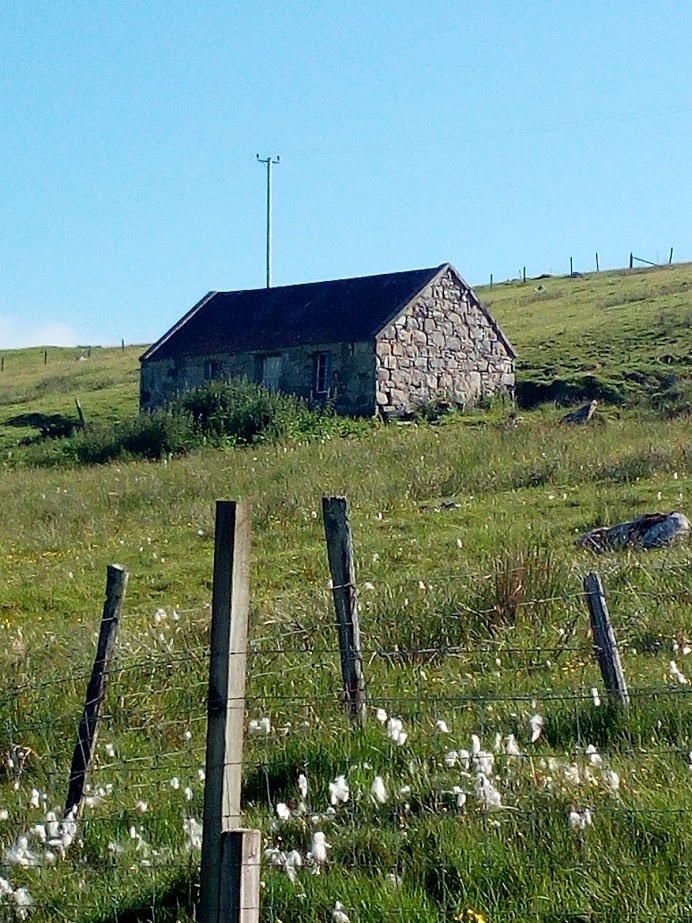
At the end of our first day of hiking, we set up camp on Barra, the second island of our journey. Spoilt only by the infamous Scottish midgie!


I feel itchy just looking at these pictures and it’s funny looking through the guide book that we used, for sandwiched inbetween some of the pages are multiple little black squished dots!
To be fair, please do not let this deter you from visiting the Outer Hebrides. More often than not there is enough of a breeze to keep them from flying at all, then they must remain grounded in their damp peaty bogs, breeding and waiting for that gap in the breeze.
Gaelic is often spoken as the first language
Gaidhlig is a Celtic language, derived from Irish Gaelic. It’s been spoken in the Outer Hebrides for many centuries and these islands are one of the last remaining places where it is still spoken as a first language. Primary schools across Scotland are now teaching Gaelic in an attempt to revive the language, lest it be lost forever.
A bit about religion on the islands
The islands at the southern end of the chain are predominantly Catholic. The folk here tend to be more relaxed about observing their religion. Buses still run on Sundays for example and most shops and restaurants remain open. It’s a different story further north however. The mainly Presbyterian islands of Harris and Lewis are much stricter when it comes to the Sabbath. No buses run, shops and restaurants will be firmly closed, as will some bed and breakfasts, leisure centers, petrol (gas) stations and even ferries may not run. Again, don’t allow this to put you off, just plan your day accordingly, enjoy the peace and quiet, make sure you double check that your accommodation allows you to stay on a Sunday, that you have a tank full of gas and enjoy the day.
What about the Climate?
The climate is dominated by the Gulf Stream. Most of the weather on the Outer Hebrides began it’s journey in the Carribean. Obviously, by the time it has reached our shores, it has cooled down considerably. Having said that when we were there we could have been forgiven for thinking that we were on a Carribean island. It was only the absence of coconuts that gave the game away.
Wet blustery days are common throughout the year and high winds in the winter months. Winters are rarely extremely cold and summer is rarely particularly hot. Except for the summer that we were there. It was the heat that thwarted our attempts to complete our challenge.
Still travelling on foot, we didn’t quit too early, we hopped on the ferry from Ardmhor on Barra for a forty minute welcome sit down on the ferry to Eriskay.

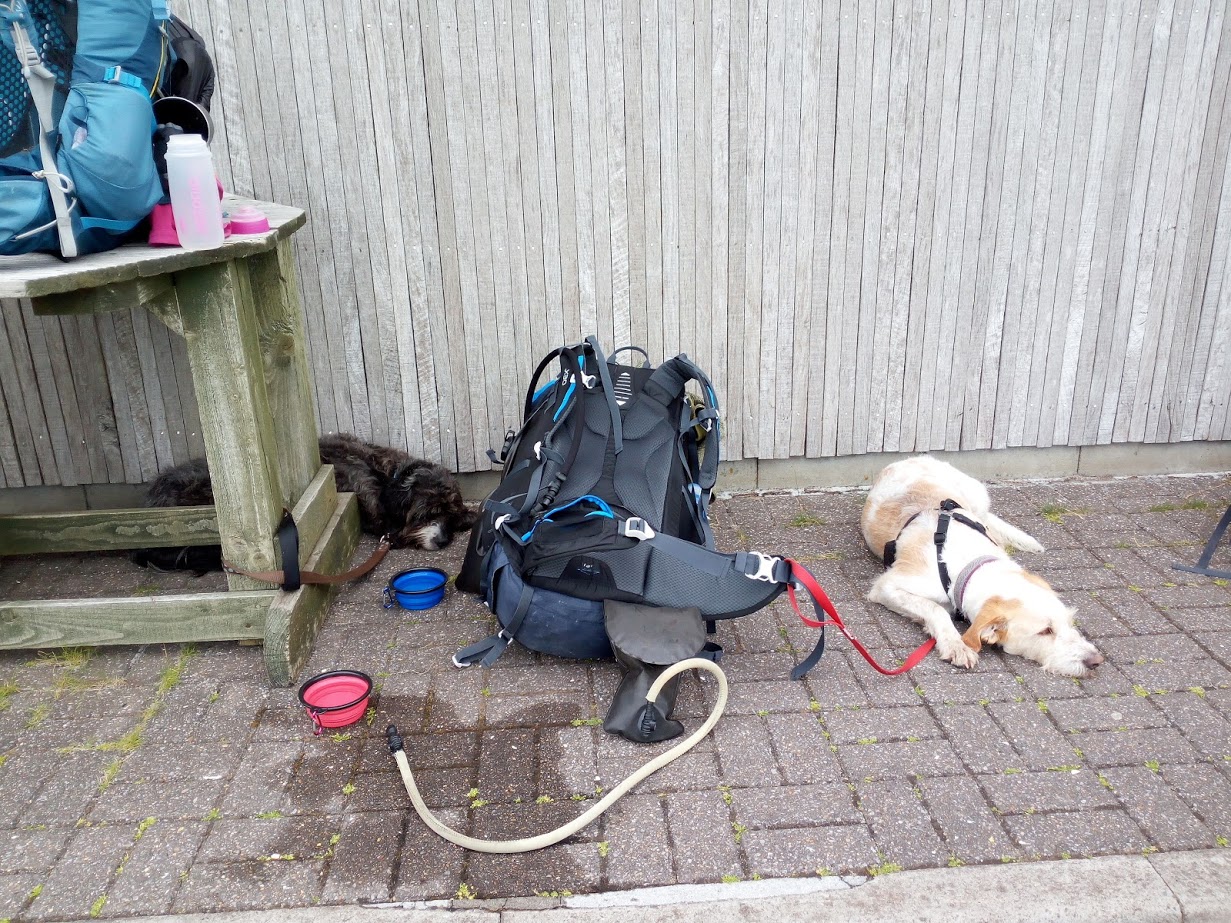
Two very tired dogs waiting for the ferry. I’d like to say that on the crossing we were leaping about the deck, excitedly looking out for wildlife. In reality though, we were stacking zzzz’s inside!
Bonnie Prince Charlie landed on Eriskay on the 3rd of August 1745
His boat landed on the west side of the island. The beach Coilleag a Phrionna (the Prince’s Cockleshell Strand). There now grow’s The Prince’s Flower, a variety of morning glory, not native to these part’s. It is said that seed’s fell from the Bonny Prince’s pocket as he removed his handkerchief. It can be found blooming just below the monument that mark’s his landing, half way along the beach.
Another notable event that occurred on Eriskay was on the 5th of February 1941, when the SS Politician struck rocks. As luck would have it for the locals at least, she was carrying crates of Scotch whisky, which they duly helped themselves to. This event was the inspiration for Compton Mackenzie’s book Whisky Galore which was later made into a movie.
We walked and walked and walked once we got off the ferry. Crossing the £9.4 million causeway across to South Uist.





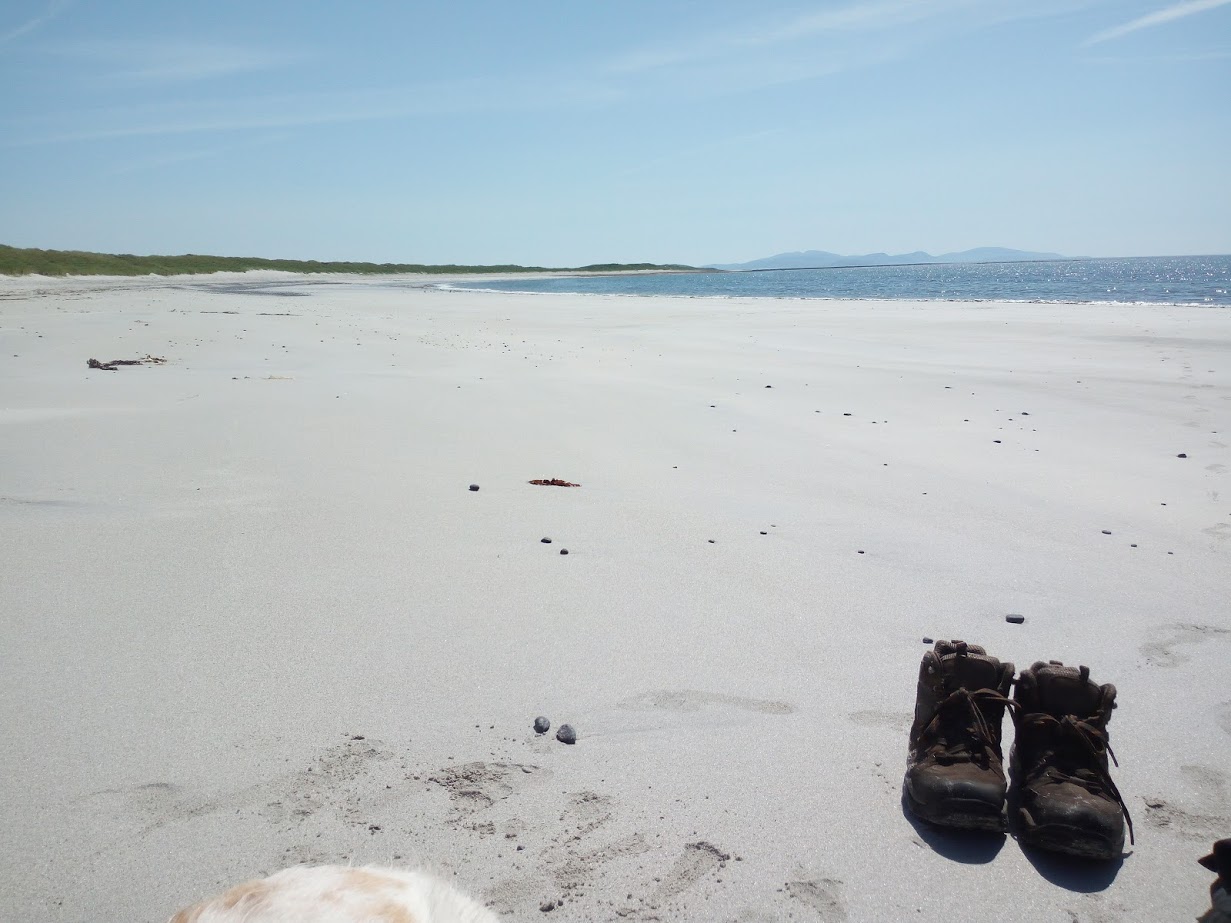
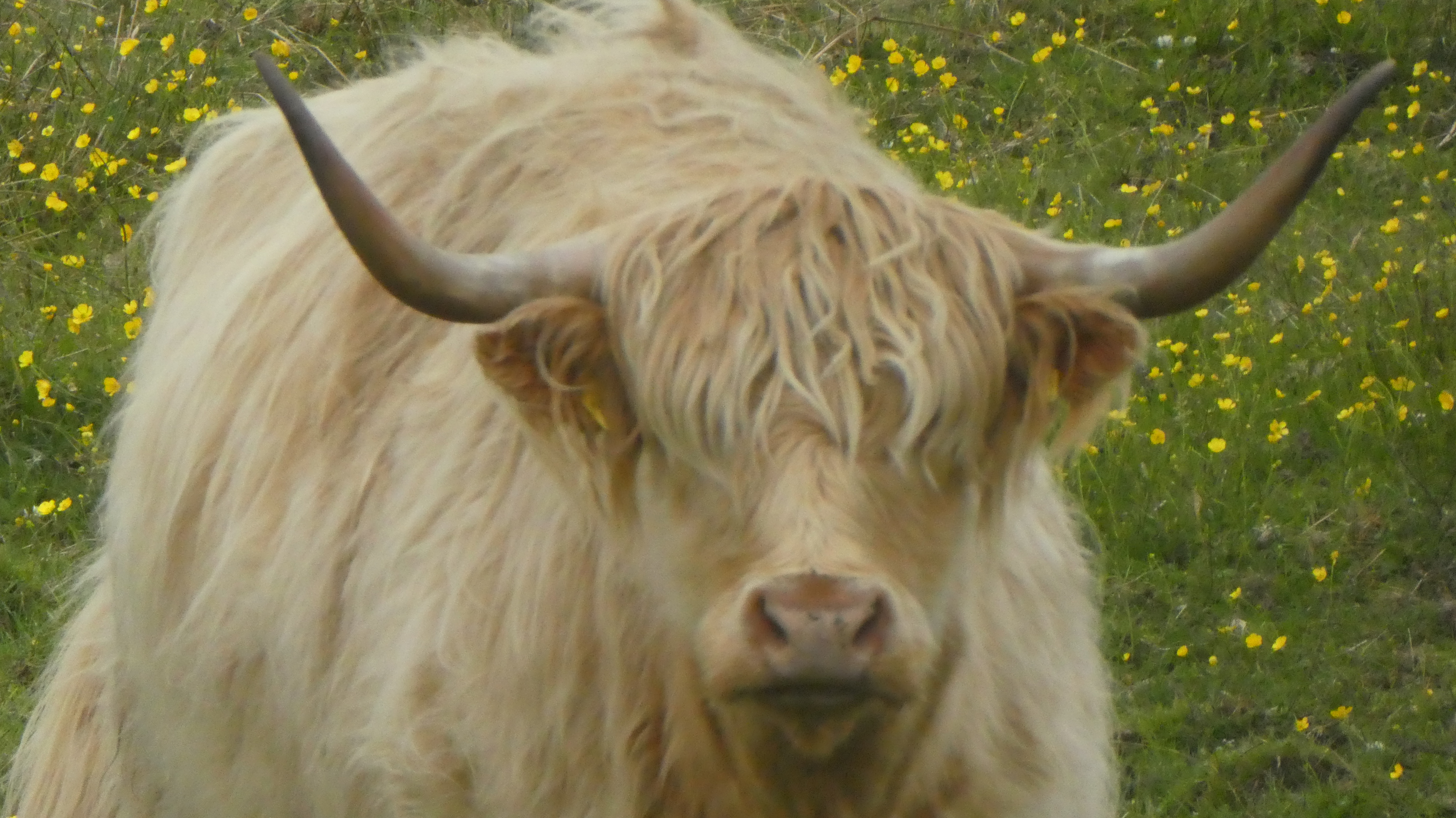
A few struggles, especially me on the steep bit’s. Arran great at motivating me and encouraging me. What a boy. Dog’s exhausted.
from my diary
We spent that night at Kilbride Campsite, our tents overlooking the still, calm sea.

Great to have a good hot shower & wash my pant’s!
from my diary
We walked along the west side of South Uist, along a stunning white sandy beach that stretched on for mile upon mile upon mile. The Atlantic Ocean to our left and Machair and working croft’s to our right.


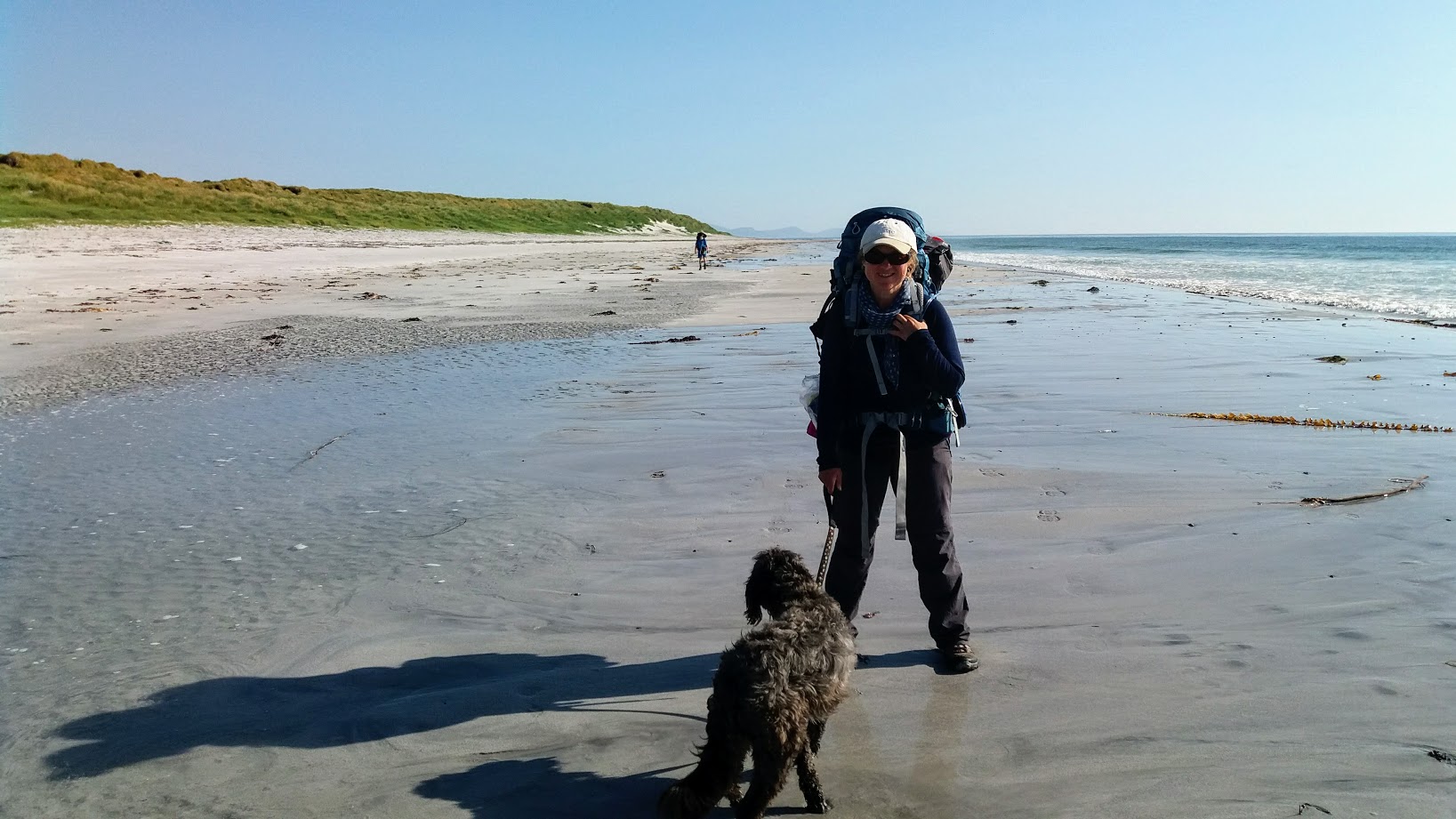
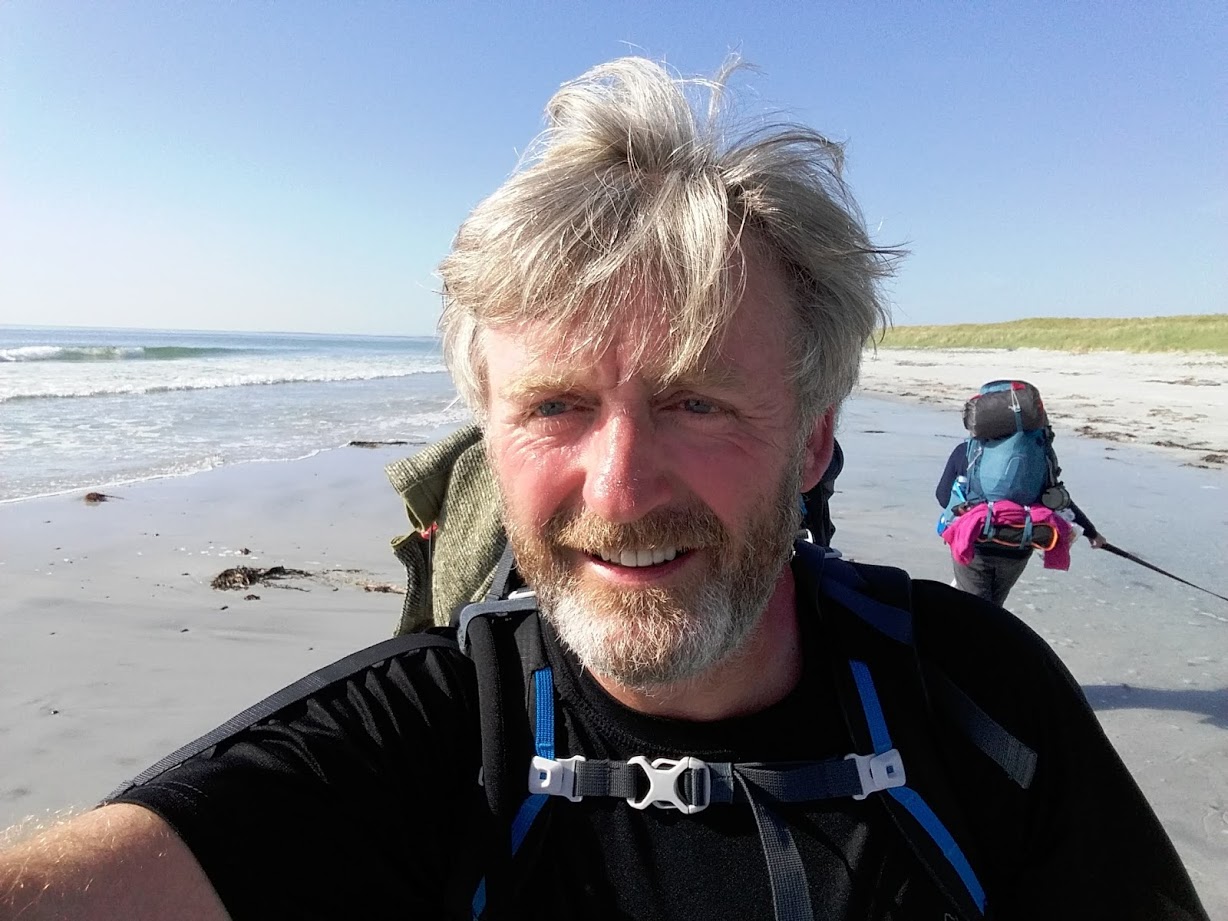

We spent a few days resting at Horgabost Campsite. By this stage we had decided to chill out a bit, walk section’s as we felt like it and taking bus’s when we didn’t.

The next stretch of walking, I did on my own with Olly Dog. It took us along the Coffin Route.



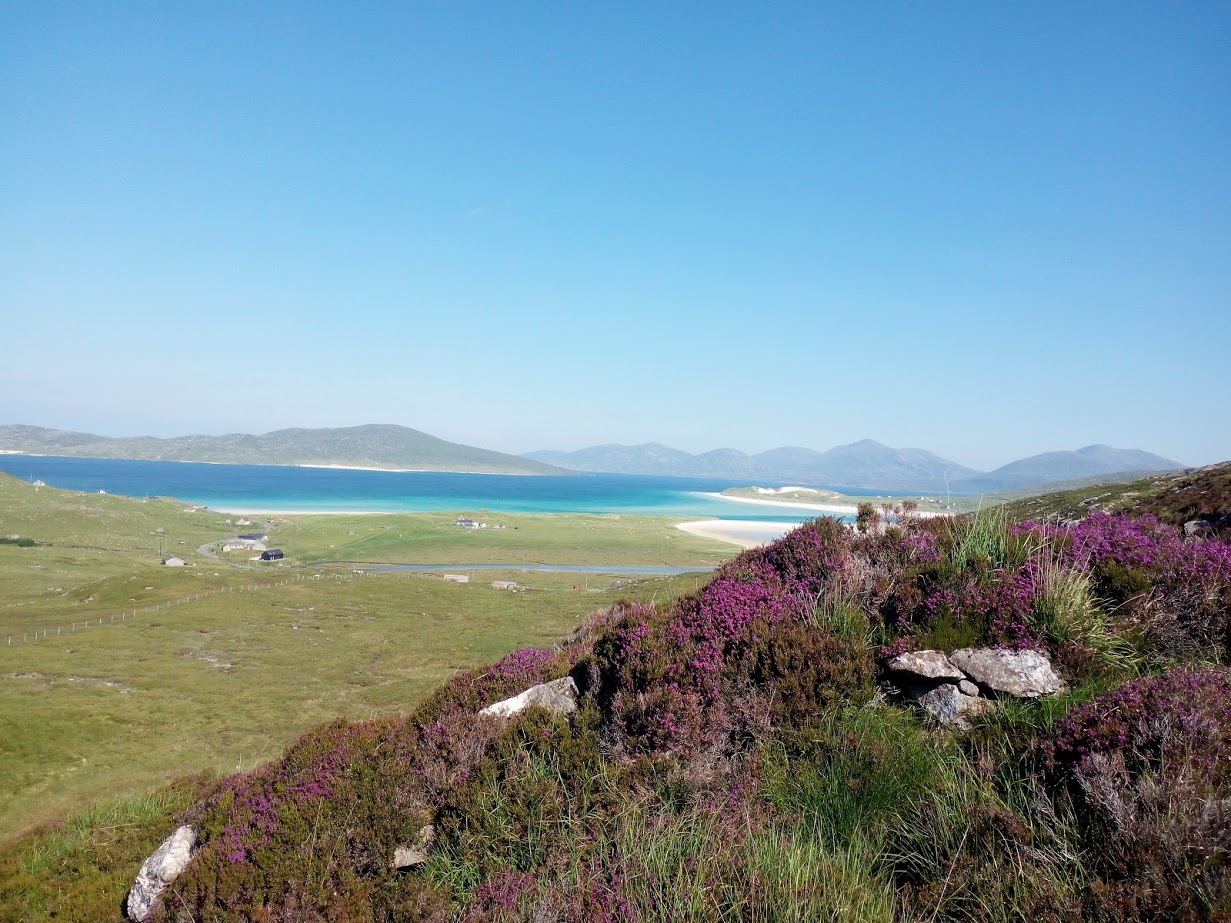

In stark contrast to earlier section’s of the journey, this was a steep, craggy, rocky stretch of track.
Why is the Coffin Route so called?
During the Highland clearances, which spanned over a period of one hundred year’s, from the mid 18th century until the mid 19th century, many families were forced from their home’s and croft’s to make way for more profitable sheep. Families from the Outer Hebrides who chose to remain on the islands they were born, in favour of traveling to the New World, were shunted from the fertile west across to the harsh rocky east coast. The scraped a living harvesting seaweed, fishing and growing what they could. They adapted.
Despite the hardship that these hardy folk must have faced, they survived. However, when they did die, it was far too rocky on the east to dig a hole for burial. So, coffin bearers shouldered their deceased in their coffins and carried them back to the west where it was possible to dig a hole deep enough to lay their loved one’s to rest. Able to return to their homes only in death.
It must have been an arduous journey, especially in the winter, no way marked trails like the one that I was following with just a day pack and my dog.
The Gearrannan Blackhouse Village
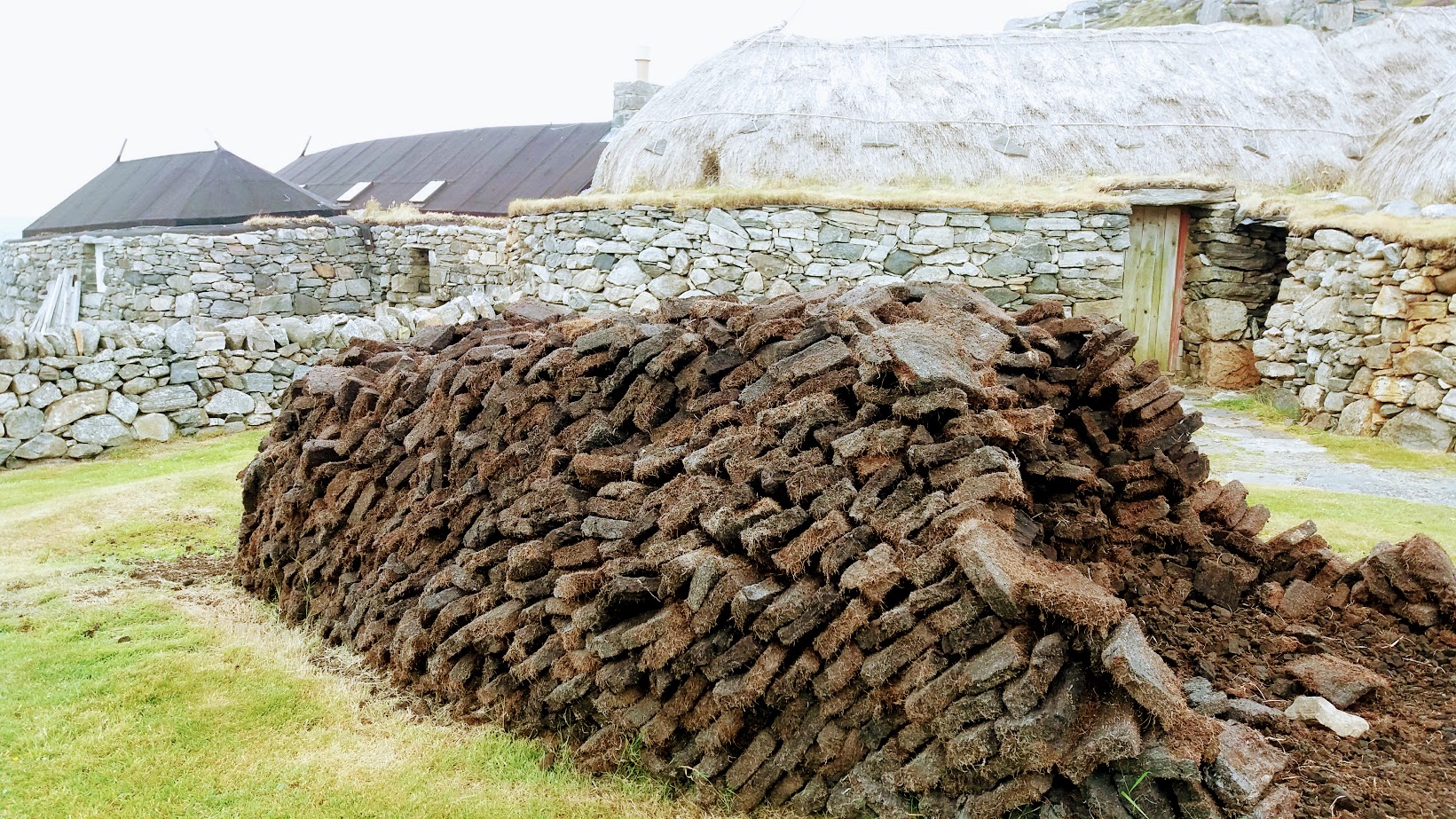
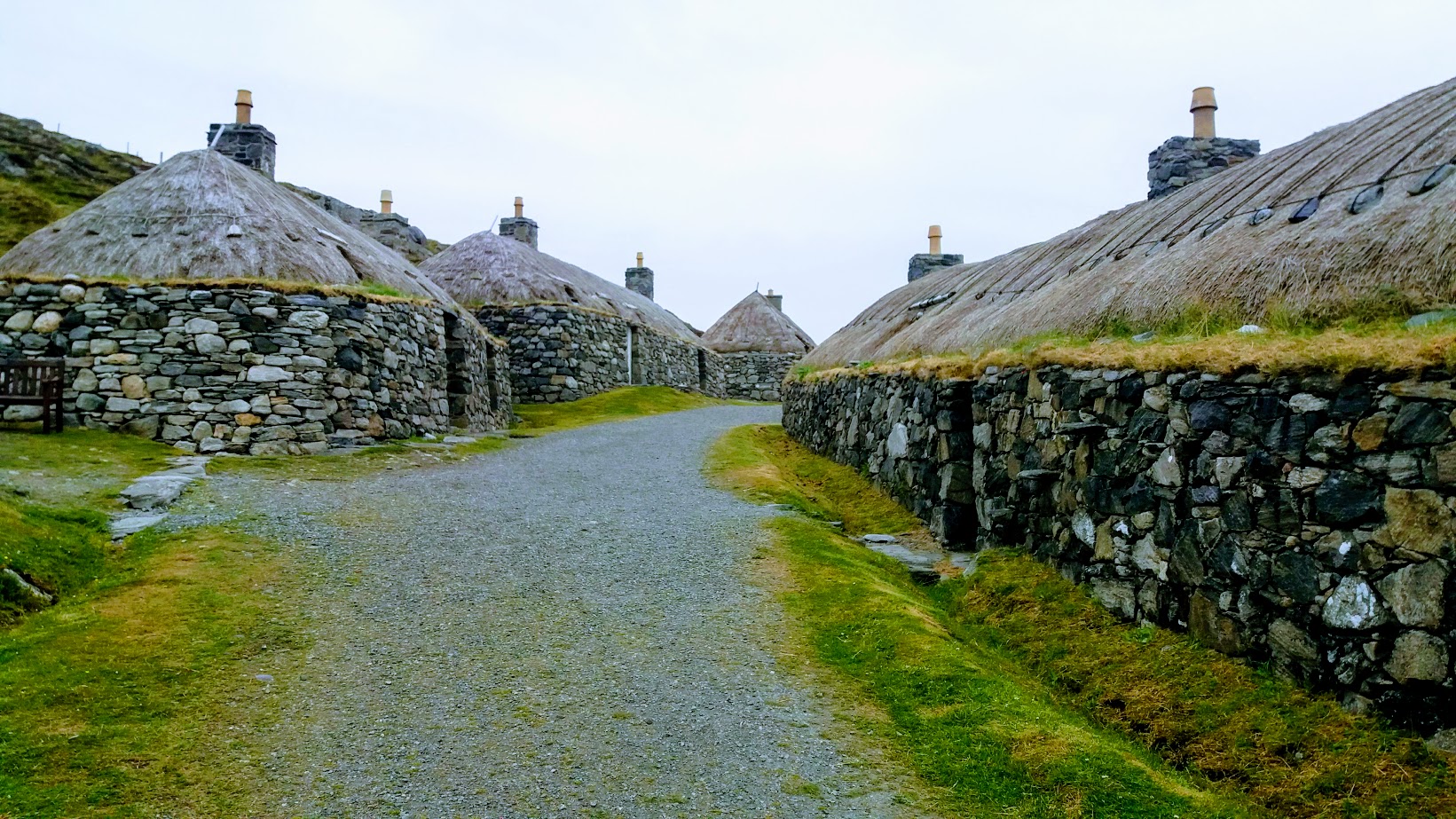




We visited this wonderful village on a Sunday, so the visitor center was closed, just bare this in mind if you are planning a trip here. It was still a fascinating place to wander around. The houses were occupied right up until the late 1970’s. The cottages are built low to the ground, hunkered down, cowering from the Atlantic winds that must batter this coast. Double stone walls must have provided good insulation too. It is possible to actually stay in the blackhouses, click here for details.
The Calanais Standing Stones
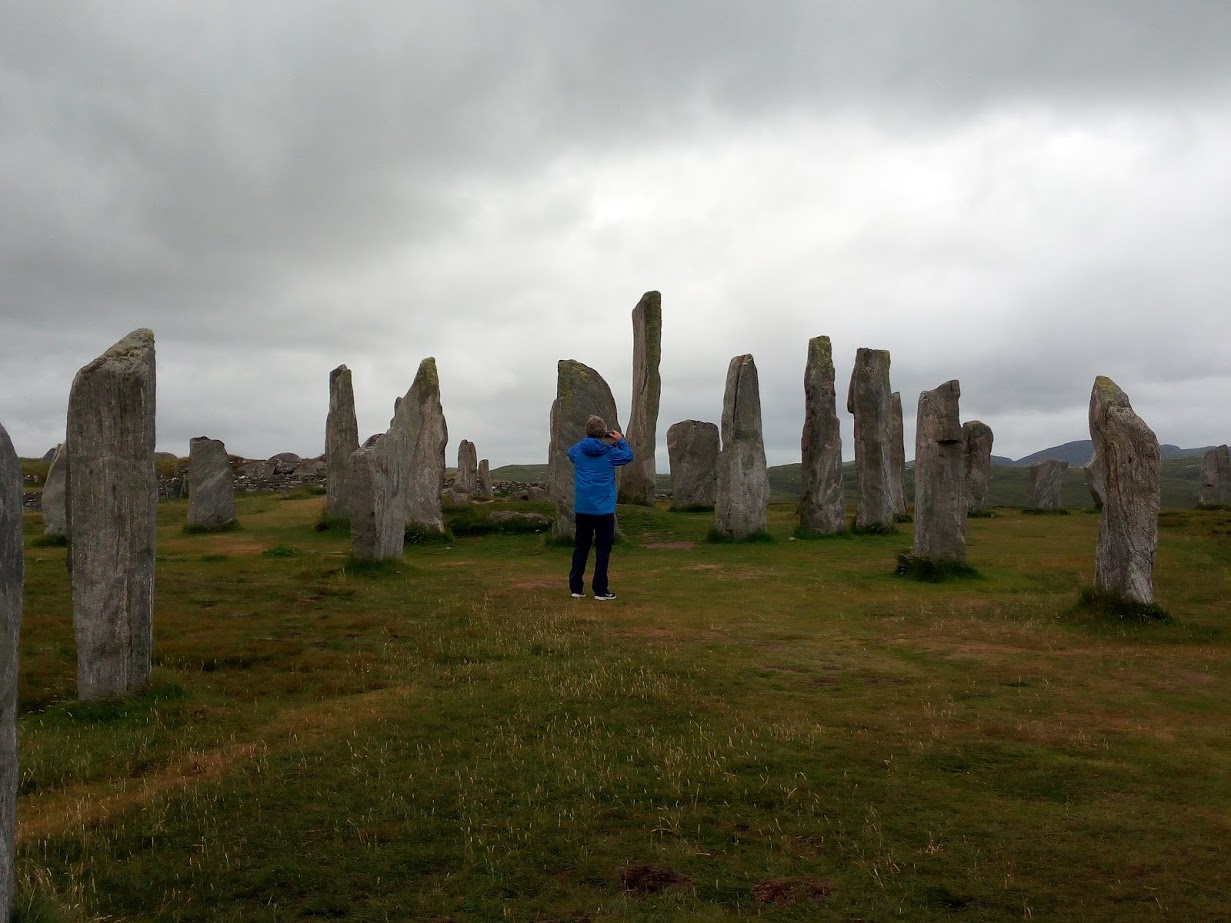

Twelve miles west of Stornoway, these standing stones are older than Stonehenge. Erected around 5000 years ago, in the late Neolithic era. The stones are arranged, I say that as if they are merely flowers, in a cruciform pattern with a central circle. How on Earth were they moved and positioned? It’s a staggering thought.
The exact purpose of the Callanish stones has been lost in time, but it is thought that the megalith’s acted as some sort of astronomical observatory or a celestial calendar.
Folklore would have us believe that they are actually petrified giants who would not convert to Christianity.

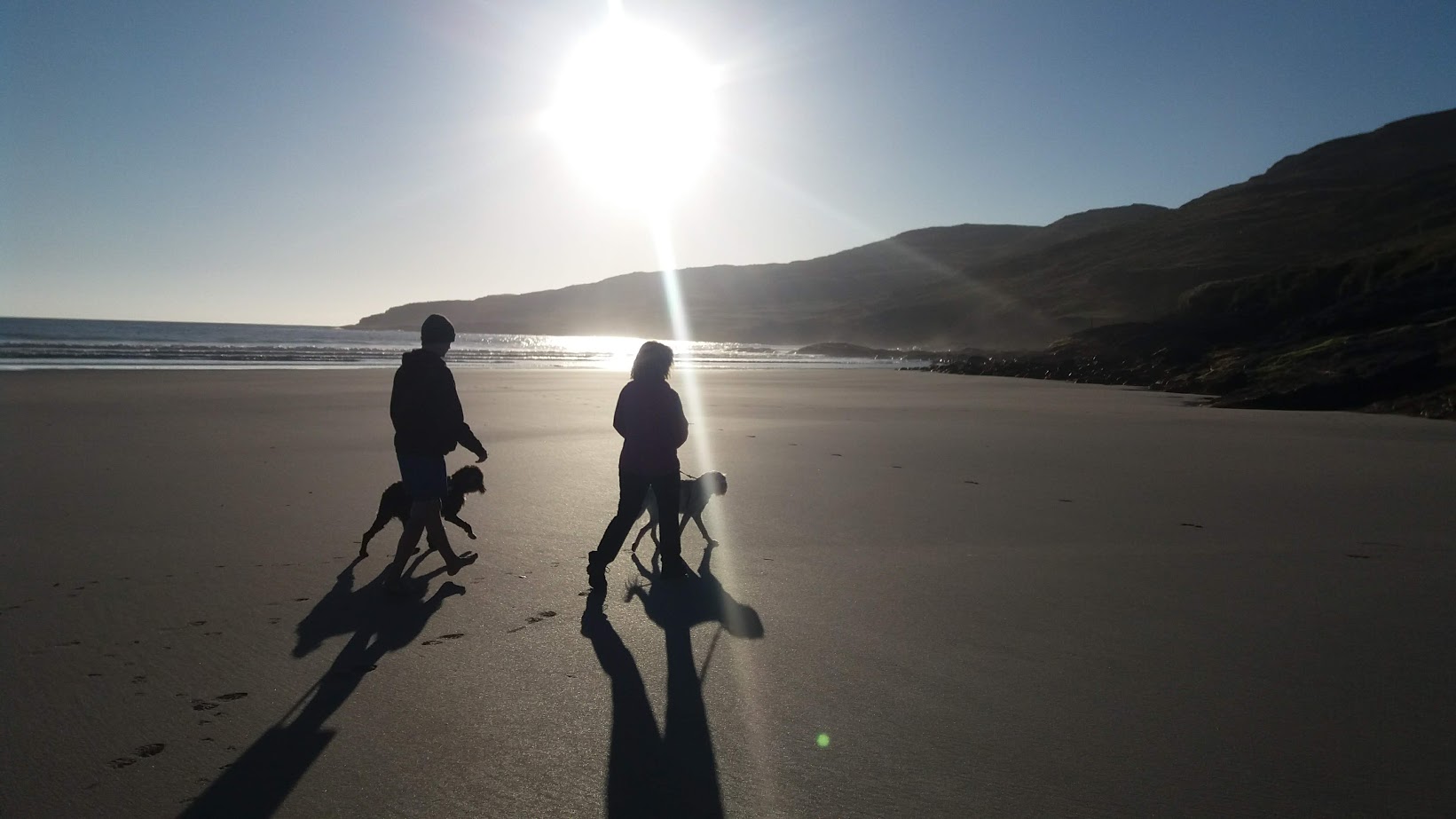



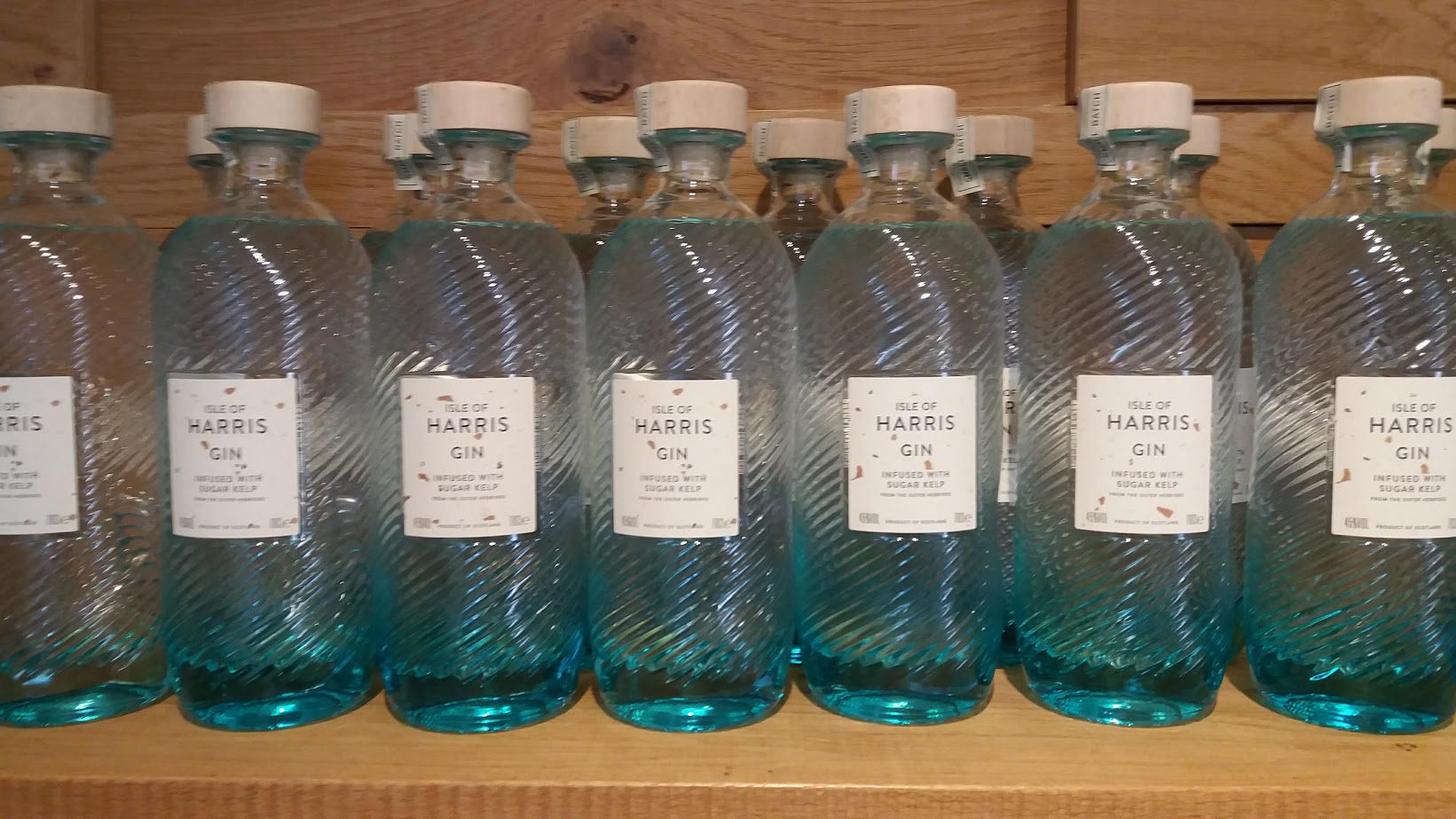





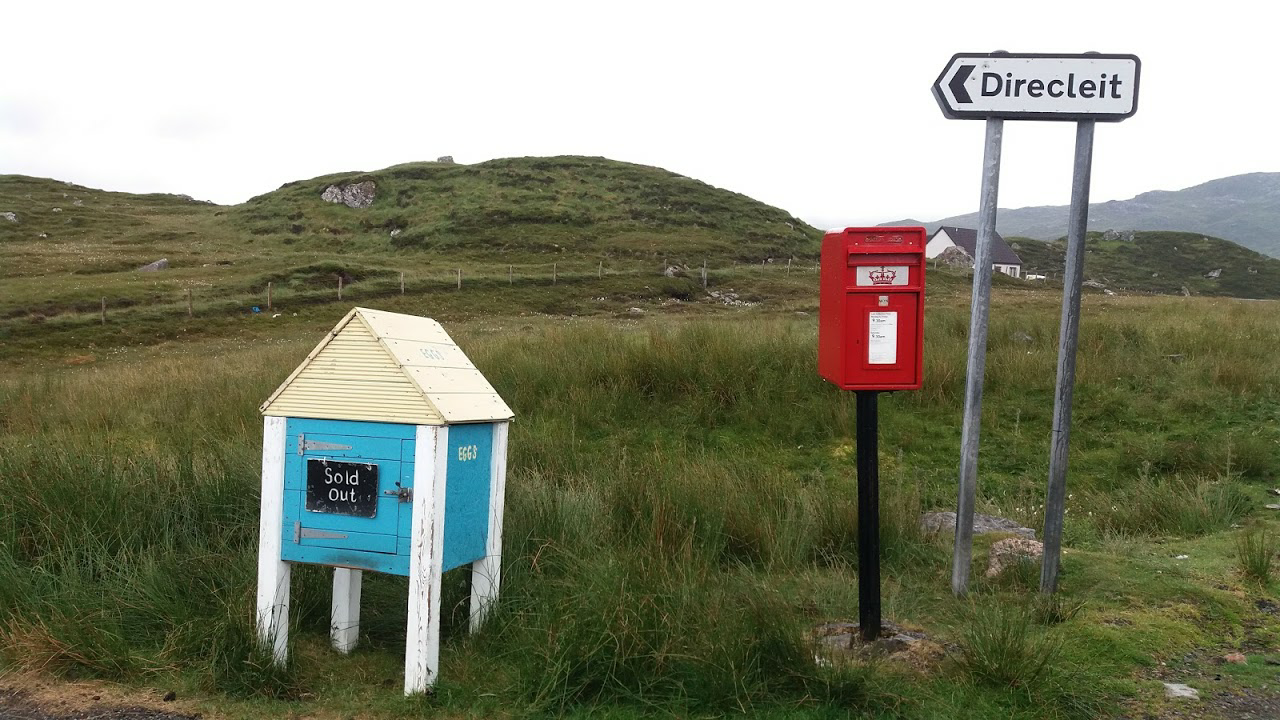
I feel as though I have barely scratched the surface of the Outer Hebrides. Part of Great Britain yet so far removed in many ways, not least of all it’s location, teetering on the edge of over two and a half thousand miles of Atlantic Ocean. A history so rich and a culture so unique. Tough, determined, adaptable folk as far removed from your stereotypical millennial as is humanly possible.
So, as I said, we didn’t manage to complete the full hike as planned, I still beat myself up about that, I hate quitting. It was an unusually hot summer and I think that we would have had a much better chance of success if we hadn’t taken the dogs with us.
Am I glad we went? You bet I am. Did we get to wind right down and experience a slow pace? Crikey yes, very slow. Will we go back? I’d love to. I’m torn between the idea of doing the walk again from beginning to end, all one hundred and fifty five miles crossing ten island’s linked by six causeways and two ferries; or just pootling along with the car, popping into galleries, tearooms and museums, walking as and when the urge takes us. Who know’s? Maybe we can do both, but with so much more of Scotland to explore and many more island’s on our bucket list, it’s all down to that magic ingredient TIME.
Have you ever been to the Western Isles? I would love to hear your stories below. Are you planning a trip there? If you have any questions at all comment below and I’ll do my best to answer them.
If you enjoyed this article, please click on the little star. Visit our website for more ideas and inspiration for you Scotland adventure.
Remember to pack your sunscreen!
Warm Regards
Anna
loved reading about your adventure Anna. I had a quick glimpse of Lewis, Harris and Skye in 2015 (first visit to UK). I say glimpse as I was doing a 10 day bus tour with Rabbies. Began in Edinburgh, up to Orkney and finishing on Skye. I LOVED it and would really like to go back and spend more time at a slower pace to really experience that part of fascinating Scotland. In fact all of Scotland. With various blogs and articles from and about Scotland, I get to see/read something from there every day. A friend also sends an email with fabulous photos taken by readers from BBC news. Just whets my appetite each week. Best wishes for you future adventures, be it by foot or car!! Cheers Bev (from Denmark Western Australia)
LikeLike
I’m so glad that you enjoyed reading my article Bev, it really is a wonderful part of scotland and there was so much more I’d like to have told you about.
When are you planning your next visit?
LikeLike
wonderful experiences Anna ,and you do have a way with words . D.J .
LikeLike
I get it from my Dad😊
LikeLike